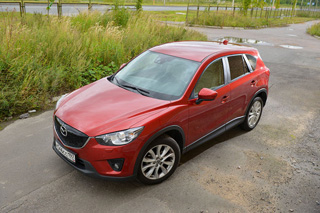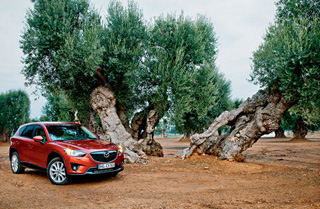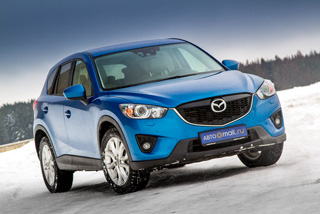Mazda CX-5 test drive since 2012 crossover
Mazda CX-5 test drive with diesel engine. Superiority in all respects
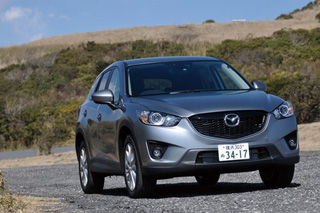 Is this a diesel? ..
Is this a diesel? .. I was taken to a test drive for 90 minutes just like a couple at the university.
Having received the task from the editorial office to photograph the car in all angles, I started the engine, rang out from the hotel parking and rushed towards all pairs towards the test site.
I well remember the first sensations from the car. Is this a diesel?, I could not believe. A month ago, I already tested the Mazda CX-5, only with a gasoline engine, and this time a version with a 2.2-liter 4-cylinder diesel engine acted as an object of a test drive. Before you go directly on the road, I stopped the car, again launched the engine with a button and started a test drive.
So, let's see what the model is on a clean diesel engine. Drivers who are completely absorbed in the driving process and do not pay attention to the little things, as well as people uninitiated, most likely will not even notice that there is a diesel engine in this car. If you have a good old ears, standing next to the machine, then the characteristic sound of a diesel can still be heard. However, if you open the door and look inside, you can make sure that absolute silence reigns in the cabin. So Mazda CX-5 can boast of magnificent sound insulation without unnecessary modesty. The diesel version and in motion in almost all parameters exceeds gasoline. In this regard, it is similar to European diesel models, which, as you know, are considered better than gasoline.
It goes without saying that a new version of any product is always something better than the previous one. Nevertheless, one look at the history of the development of Japanese diesel engines is enough to understand that the CX-5 diesel model is not just a banal improvement, but a real revolutionary breakthrough. If we compare this motor with other environmentally friendly diesel engines of cars of the same class, it becomes obvious that the CX-5 exceeds the Nissan X-Trail and Mitsubishi Pajero on the head. An important advantage of the CX-5 is that it is cheaper than the above models.
In the city of Hacoc, I tested the front -wheel drive and all -wheel drive versions of XD, and also for comparison I once again experienced a gasoline model.
New generation diesel engine
The peculiarity of the new 2.2-liter 4-cylinder diesel engine with the Twin-Turbo system is that it pleasantly surprises with its quiet and even work. The revolutions are gaining smoothly. Thanks to turbocharges (with large and small turbines), the speed is gained rapidly, and the turns easily reach the limit of 5500. As they approach the upper limit, at the very moment when the maximum power is squeezed out, there is no unpleasant feeling that the motor is clogged with something like that It usually happens in diesel engines with a weak response. In a word, this power unit gives exceptionally natural sensations.
The maximum output power of the diesel engine is 175 horsepower. This characteristic significantly exceeds the power of the gasoline engine, the maximum of which is only 155 horsepower. The maximum torque, which is reached at 2000 revolutions per minute 42.8 kg-m.
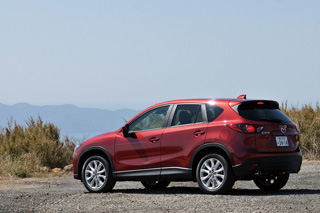 Honestly, after studying the characteristics, I expected a really huge torque, but this remained in my dreams. If we talk about the first impressions, I personally would like to feel more power. Nevertheless, this engine is much better than many fresh engines that demonstrate a large torque in low gears.
Honestly, after studying the characteristics, I expected a really huge torque, but this remained in my dreams. If we talk about the first impressions, I personally would like to feel more power. Nevertheless, this engine is much better than many fresh engines that demonstrate a large torque in low gears. The Hacoco roads were almost empty, but the start-stop system, which was equipped with the XD model, was nevertheless turned on. I often paid attention to the work of the start-stop system in regular buses, when, when stopping at traffic lights, the wall of the sound standing in the cabin while driving disappears as if by the wave of a magic wand. In contrast to this, the CX-5 diesel engine even works absolutely silently during the ride, so when the engine stops, this strange feeling of sudden silence is absent.
The speed of the engine restart is the same as in the Mazda I-Stop system.
In the 2.2-liter diesel CX-7, which was produced for the European market, the ADBLUE liquid (a solution of synthetic urea in water) is used to neutralize nitrogen oxides. However, the new generation engine SkyActiv-D 2.2, even without using such a subsequent processing system, meets the environmental standard of the Post New Long-Term Regulations.
The diesel soot filter is arranged so that the accumulated soot is burned with an interval of 250 km of run, and regeneration is launched automatically.
This system cannot be adjusted independently, as in X-Trail, you have to rely solely on automatic control.
Comparing gasoline diesel
If you compare the all -wheel drive model and a front -wheel drive model, I can say that the latter impressed me with its lightness (the weight of such a machine is much less than 100 kg). The steering here is also light, which gave me even more pleasure from driving.
On the front-wheel drive version of the CX-5, you should bump a little, touching a turn with twisted wheels, as they immediately break into the boxes. What did you count on? The torque of this car is far from weak. The equipment with 4WD allows you to feel confident at the wheel even at high speeds, and the front -wheel drive option, on the contrary, brings many nerves and unnecessary experiences for your own safety. I think that when purchasing Mazda CX-5, it is reasonable to make a choice in favor of configuration with all-wheel drive. Only she is able to give you pleasure from more than forty kilograms of torque.
The sales level of Mazdacx-5 exceeded all conceivable and unthinkable expectations. It is noteworthy, 70% of them were diesel equipment XD. However, the developers say that on city roads with a large number of traffic jams, a gasoline model is preferable. For my part, I cannot agree with this. Diesel will not deliver absolutely no problems while driving around the city at low speeds.
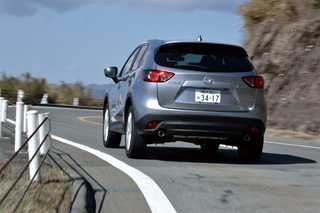 After the Mazda CX-5 XD test drive, I decided to ride along the winding roads on the 20S gasoline model with front-wheel drive. It is 70 kg easier than the front -wheel drive XD, which is one of the advantages of 20S compared to the diesel engine.
After the Mazda CX-5 XD test drive, I decided to ride along the winding roads on the 20S gasoline model with front-wheel drive. It is 70 kg easier than the front -wheel drive XD, which is one of the advantages of 20S compared to the diesel engine. However, in terms of speed set, it can not compare with the XD. When leaving the turn, I want to add more traction. You press the pedal to the end, but the reaction to the 6-speed automatic transmission Kick Dawn is not the same as in the case of an engine with the I-Stop system. Even if there was no kik doward, there is still a huge difference with XD and its powerful torque. In addition, the CX-5 gasoline model is more noise than diesel.
This time I could not measure the fuel consumption, but it goes without saying that buying diesel fuel is much more profitable than gasoline. At least in Japan.
Today's test drive allowed me to draw the following conclusion: if I have to choose between two models of Mazda CX-5, of course, I will give my preference to the diesel version.
Technical characteristics of Mazda CX-5 in the configuration XD 4WD
Total length: 4540 mm
General width: 1840 mm
Total height: 1705 mm
Wheel base: 2700 mm
Mass: 1610 kg
Drive: complete
Engine: 2.2-liter in a 4-cylinder 16-valve DOHC diesel diesel engine with a turbocharger
Maximum output power: 175 hp at 4500 rpm
Maximum torque: 42.8 kg-m (420 nm) at 2000 rpm
Basic value: 2,790,000 yen (about $ 34,900)
The cost of the test model: 3 001 250 yen (about $ 37,500): DiScharge 80 000 package (about $ 1000); Cruise control system 78 750 yen (about $ 980); Tires 225/55 R19 and 19-inch aluminum discs 52,500 yen (about $ 660)
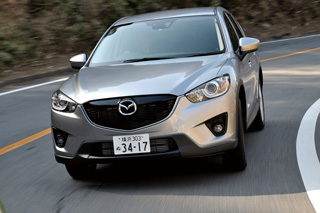
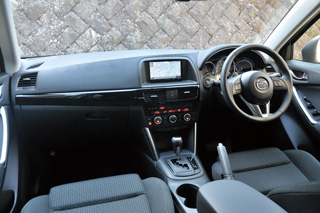
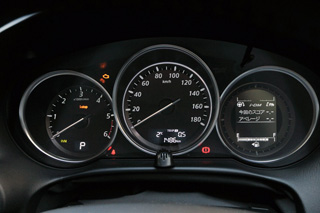
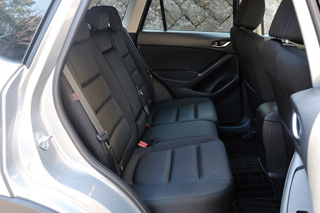
Source: webcg.net

.jpg)
.jpg)
.jpg)
.jpg)
.jpg)






